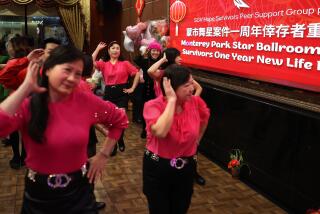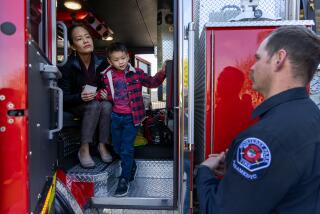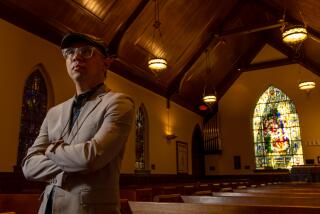At memorial services for San Bernardino victims, ‘a different kind of grief in people’s faces’
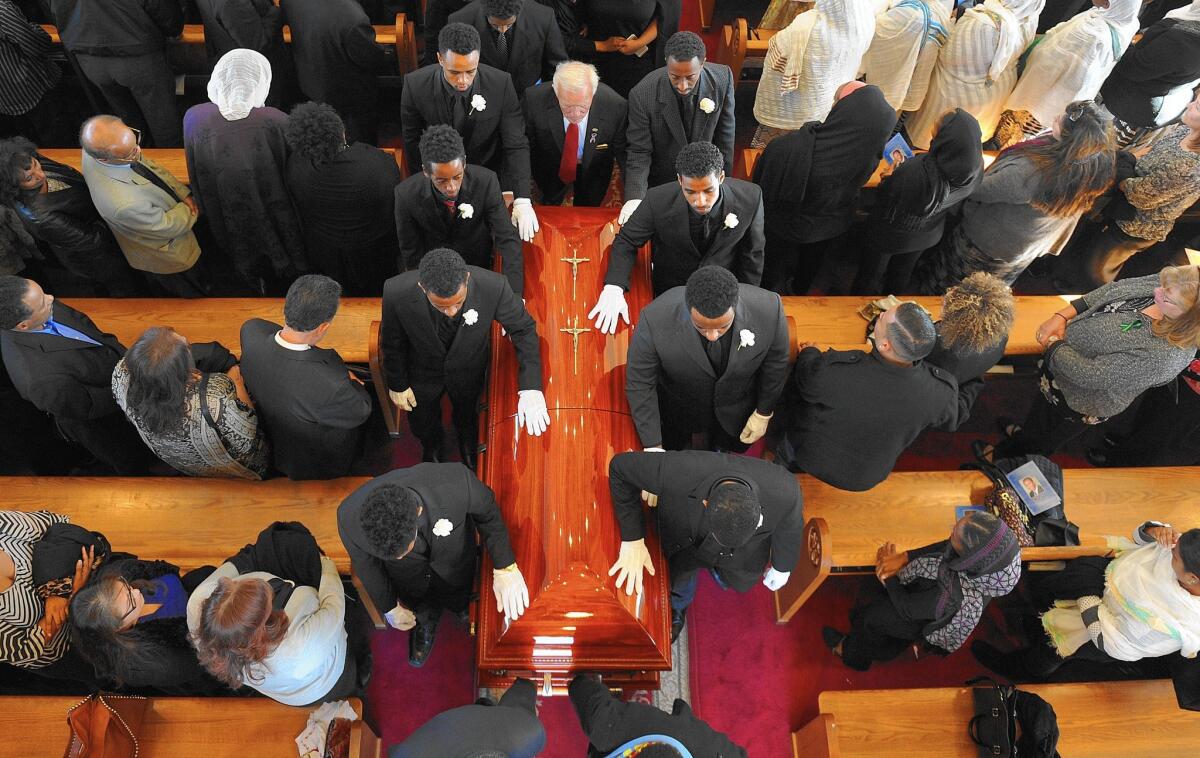
As he stood next to the casket Friday, and then near another Saturday, Bob Kirk studied faces in the crowd.
The 74-year-old funeral service director has worked memorials for a decade, but the ceremonies he assisted at last week for two of the men murdered in San Bernardino felt distinct.
“I saw a different kind of grief in people’s faces,” he said. “Tremendous heaviness.”
Even though he didn’t know Damian Meins or Isaac Amanios, they both felt so familiar, and he did something he almost never does on the job: He cried. When Meins’ daughter told him she wished all the painful attention would go away, Kirk said he worried it never would.
“He’ll always be a martyr in our eyes,” he said of her father, who, along with 13 others, had died in the worst terrorist attack on American soil since Sept. 11, 2001.
In many ways the grief of the victims’ families was that of the nation as a whole.
President Obama mourned the deaths and the families’ losses in a televised address last week from the Oval Office. Meanwhile, reporters cold-called the victims’ relatives, saying they were so sorry and that they’d like to know more about their loved ones’ lives, personalities and passions.
One young widower, James Godoy, responded to a reporter’s email shortly after he picked out the outfit his bride Aurora, 26, would wear during a viewing of her body. Phu Nguyen said family and friends around the world heard about the killing and called from France, Australia and Vietnam to offer condolences on the death of his niece, Tin, 31.
“We cannot stop crying,” Nguyen said, softly.
Their grief, at times, acquiesced to the national spotlight.
Relatives of victim Yvette Velasco, 27, initially planned to have a private funeral, like many of the other victims’ families, but eventually agreed to allow media to attend.
Her father’s grief felt palpable at an outdoor service under overcast skies on a recent afternoon.
Robert Velasco’s voice shook. He reflected on how his carefree daughter had become a bit restless in the last couple of years.
“Almost,” he said, “as if she knew her time with us was limited.”
A few minutes later, he cupped a white dove in his hands and flung it into the air. The bird soared over the hill and out of sight.
In a seat near the mausoleum, a little boy in a white button-up shirt bent over and sobbed into his knees. When he stood a few minutes later, he locked eyes with the funeral’s harpist. She pulled her left hand from the strings and waved at him.
The little boy smiled but kept crying.
After the ceremony had ended, the pallbearers hoisted the casket from its stands, catching the eye of a group of photojournalists in the distance. They picked up their cameras with long lenses and rushed toward the stage, snapping photos as they ran.
Velasco’s aunt, Angelina, said the media attention made everything feel more surreal.
“I can’t…” she said, trailing off for a moment. “I can’t believe it happened.”
Michael Nguyen, a friend who gave a eulogy at Velasco’s funeral, said he thinks the media intrusion is worth it.
That way, he said, the attention is on his friend and the other victims. Nguyen, who is not related to victim Tin Nguyen, said he’s been bothered otherwise by what he interprets as the media’s fixation with the shooters.
“Rather than ‘Oh, what was the tie to ISIS? Oh, was he brainwashed?’” he said, “let’s pivot our focus back to the lives that have been stolen from us.”
Many people in the crowd said they didn’t know Yvette Velasco well, if at all, but had come to pay respect to the family. Neighbor Paul Enriquez said the death felt like a weight on his shoulders — on a par with his wife’s cancer, he said, as one of the hardest things he’s ever faced.
“Nobody is immune to the terror,” he said.
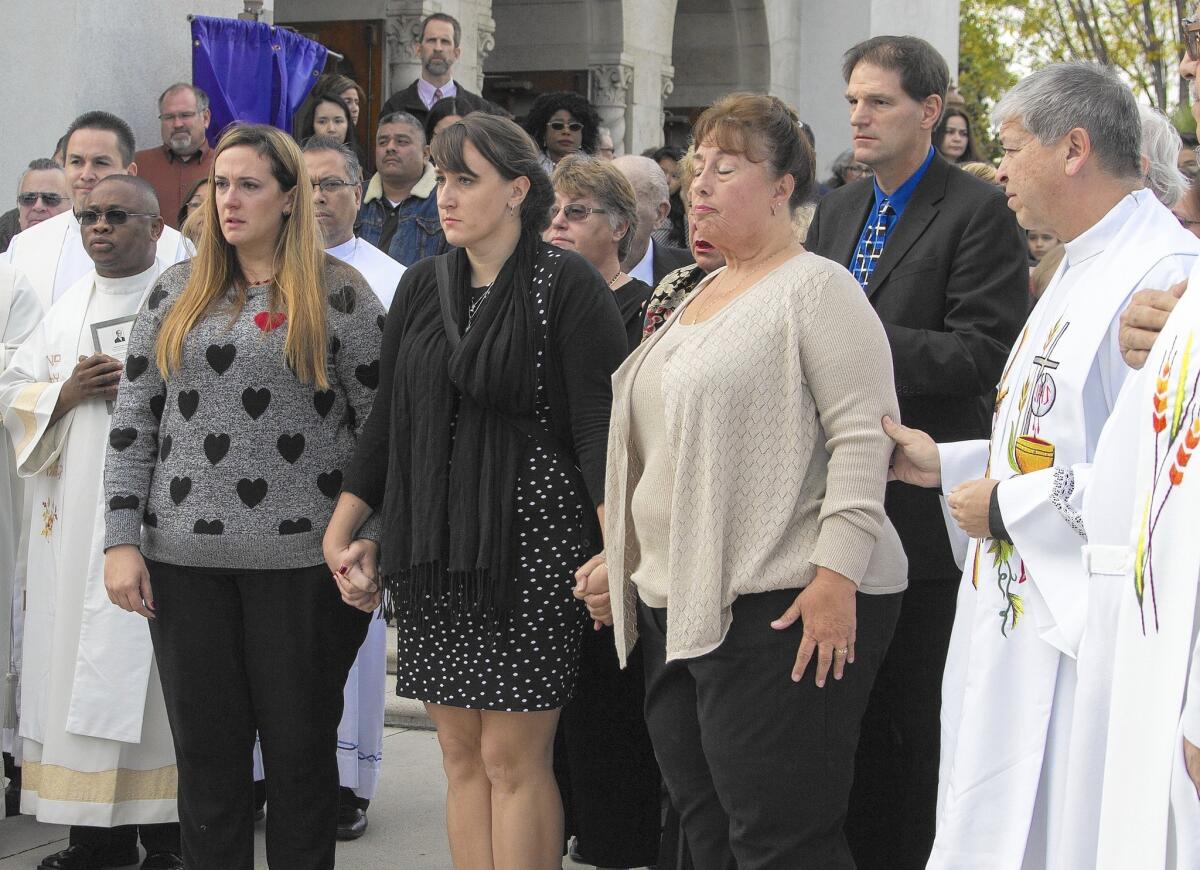
Tina Meins, left, and Tawnya Meins, center, stand with mother Trenna Meins, right, as the casket of their father, San Bernardino shooting victim Damian Meins, is placed in the hearse at St. Catherine of Alexandria Church in Riverside.
::
The national conversation has largely moved on to gun control and broader discussions about terrorism. To the implications on the election of Donald Trump’s comments about Muslims and to new tragedies.
But for the families and friends of the victims, grief has just started to settle in.
For Mandy Pifer, a psychotherapist and longtime member of Los Angeles Mayor Eric Garcetti’s crisis response team, the massacre in San Bernardino meant a heartbreaking role reversal.
She’s used to rushing to the scenes of death, often arriving before even the coroner.
But this time was different.
It was her boyfriend, Shannon Johnson, 45, who’d died. The man she’d dated for three years and intended to marry. The one who was planning to get a tattoo of her face and who had wrapped his arm around a co-worker during the shooting, helping to save her life.
Two days after he died, she sat in the kitchen of his Koreatown apartment and stumbled over remembering the simple details of his life. She’d seen it before in trauma survivors. Grief had damaged her memory.
“I’ve studied it,” she said. “Experiencing it is something different.”
That sorrow never lets up, said Richard Martinez. His son, Christopher Michaels-Martinez, was among the six young people killed last year in Isla Vista by a college student who then killed himself.
“I miss my son every day,” Martinez said, sighing, in a telephone interview Sunday. “It’s horrifying. It doesn’t go away.” Martinez, who works with Everytown for Gun Safety, was on the East Coast to participate in a march for gun control that commemorated the third anniversary of the fatal shootings of 20 children and six adults at Sandy Hook Elementary School in Newtown, Conn.
Martinez said he tried to watch some coverage of the San Bernardino shooting but had to turn the TV off when he heard reporters talking about the shooters. It still feels so fresh, so familiar.
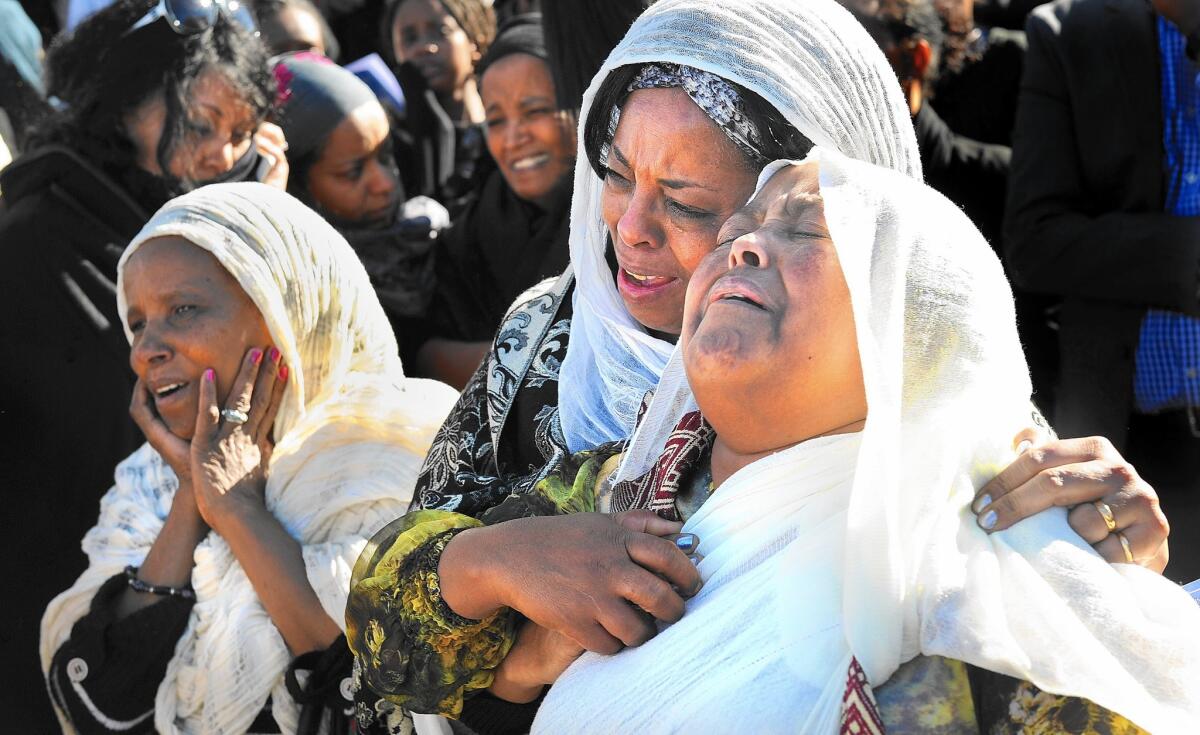
“You’ll never look at life the same way again,” he said. “Grief stays.”
In the Inland Empire, such sadness lingered all around.
You could see it at the memorial site outside the Inland Regional Center, where the victims were shot. In the wilted roses hanging from a chain-link fence and the sign that reads, “To our loved ones, sorry you were not protected.”
It was on the woman’s face as rain pelted another sign that read, “Dear Lord, Please protect all & let peace reign,” and the black marker bled down the poster board like tears.
You could hear it, too, in Bethanie Lara’s small voice Friday as she walked with her mother, Bernice, past the poinsettias and candles at the memorial. Although the mother and daughter had no direct connection to the massacre, they’d made the trip from their home in Redlands to say a prayer for the victims.
“Who died, Mama?” the 6-year-old asked.
“A lot of people, baby,” Bernice said, hunching over to rest her hands on her daughter’s shoulders.
“Oh,” the girl responded.
Bethanie’s eyes bounced to a bouquet nearby — nine white roses for the men who died in the shooting and five red ones for the women. Flowers usually make her happy, she said, but not now. She’d realized that this was the story she’d seen on the news nine days earlier.
“Bad people were killing people,” she recalled.
She looked up, toward the regional center, and shook her head. She couldn’t help but think about what the victims had seen right before the bad people killed them.
She said she hoped they hadn’t been scared.
Twitter: @marisagerber
Contributing to this report were Times staff writers Alan Zarembo, Hailey Branson-Potts, Anh Do, Matt Hamilton, Soumya Karlamangla and Ruben Vives.
ALSO
UC draws criticism after extending its transfer application deadline
O.C. suspect mixed online search for murder tips with honeymoon spots, FBI agent say
After San Bernardino shooting, this gun show could get a crowd twice as big as usual
More to Read
Sign up for Essential California
The most important California stories and recommendations in your inbox every morning.
You may occasionally receive promotional content from the Los Angeles Times.
